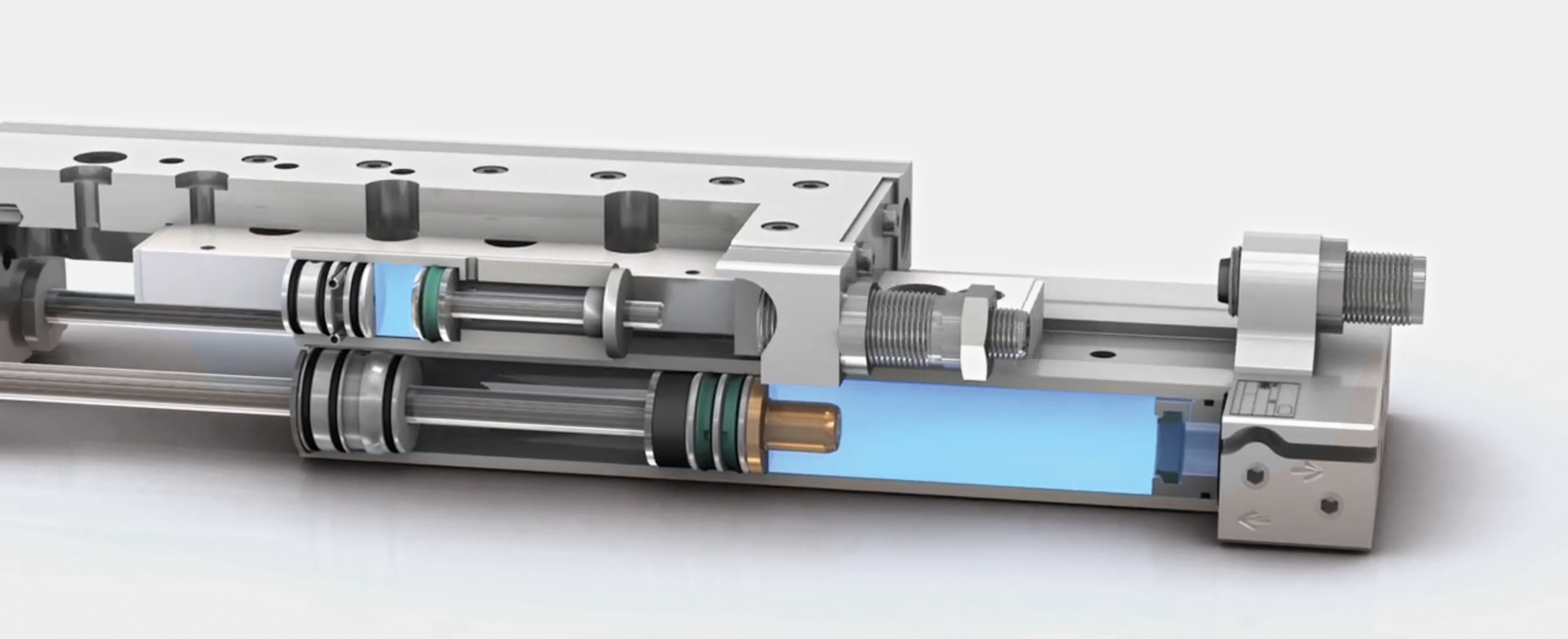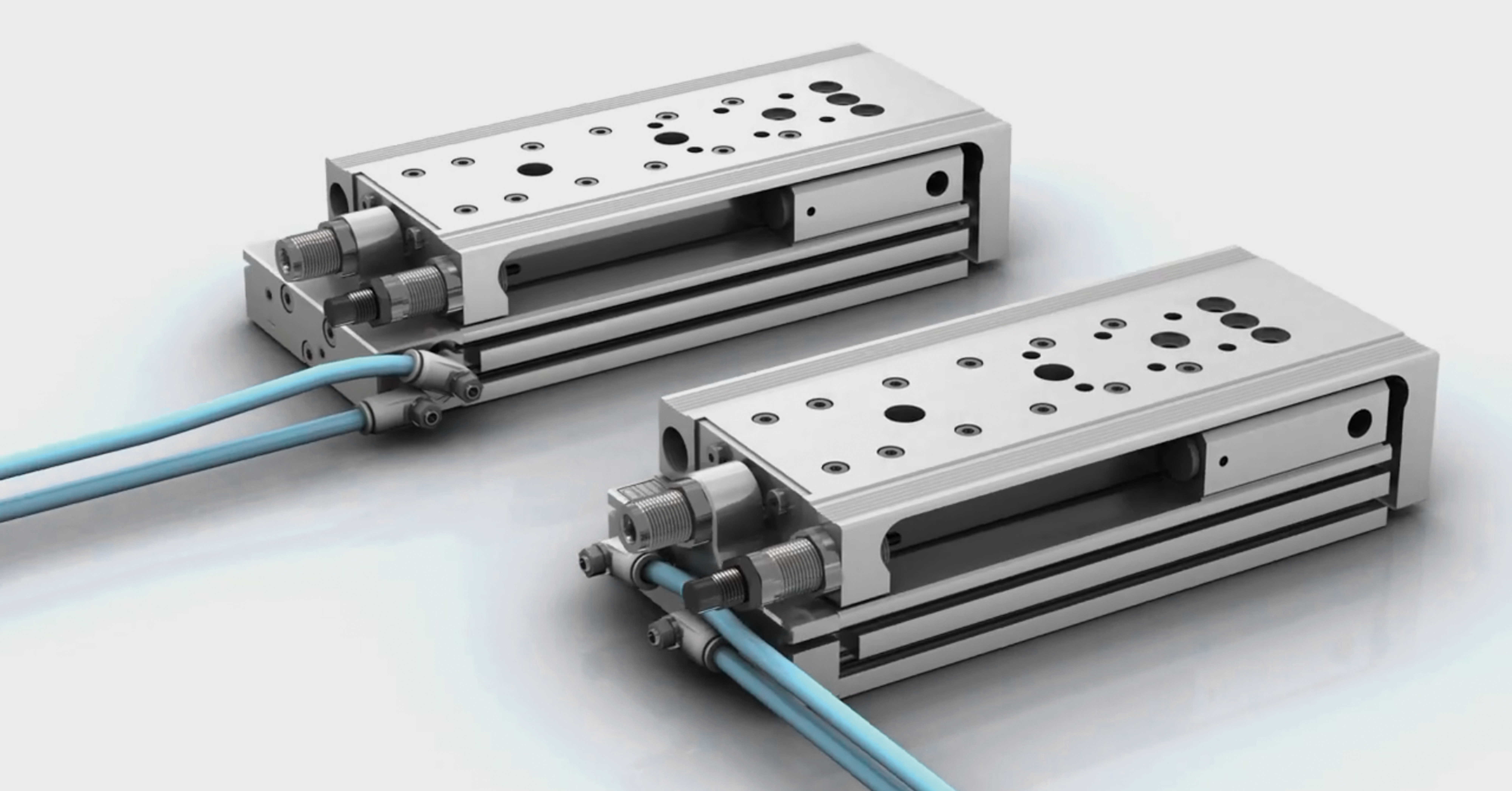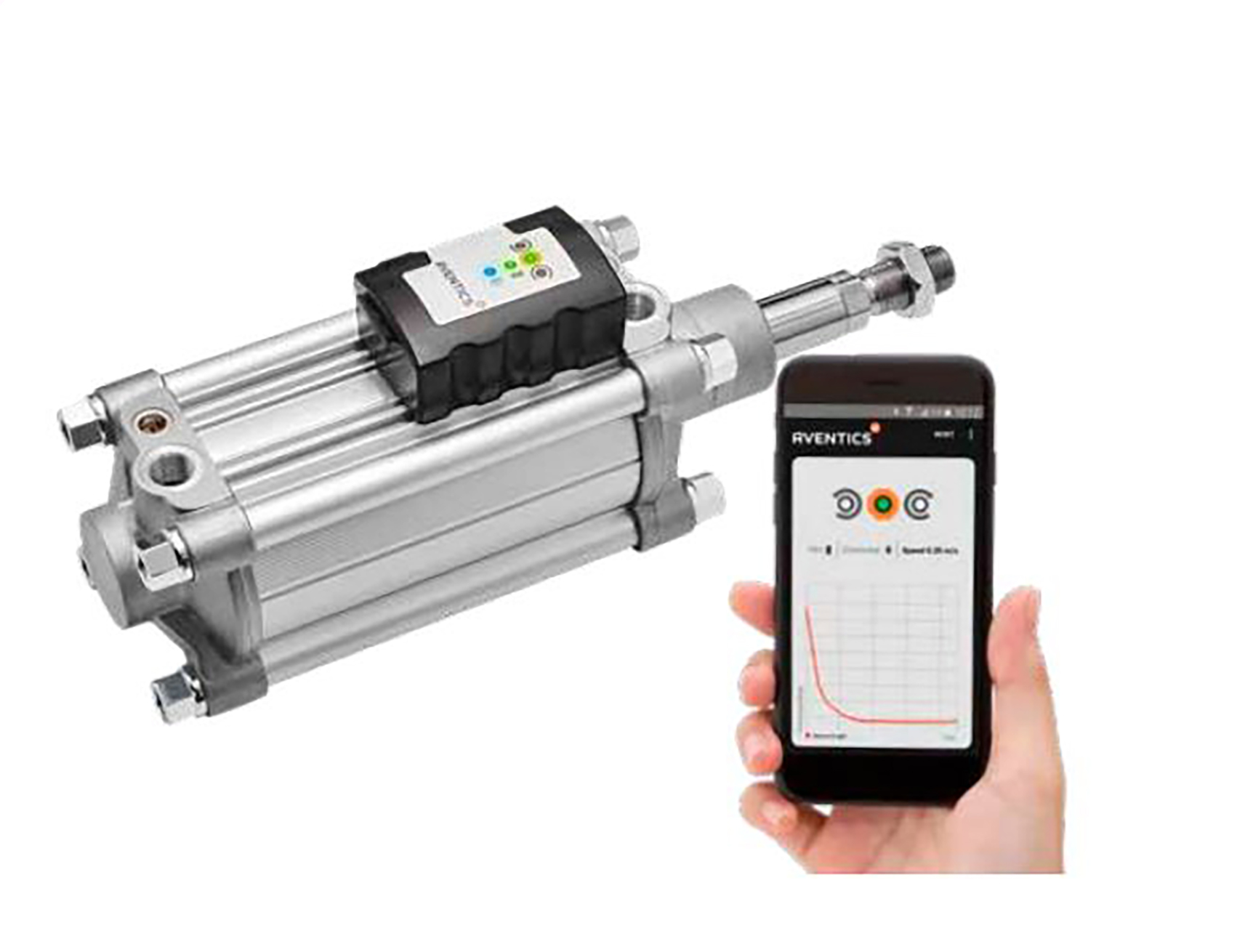Why Is Cushioning in Pneumatic Cylinders Important?
By Josh Adkins Product Marketing Specialist, Actuators, from Emerson
Cushioning isn’t a new concept in fluid power, but it is a significant one as it can influence lifetime and performance of machines. Cushioning is usually required in cylinders to decelerate the load the piston is moving. Without it, the piston can strike the cylinder’s end cover. The force of this impact can cause shock, vibration and oscillations that extend to the rest of the machine. These negative effects can disturb cylinder accuracy, create excess noise and prematurely wear the cylinder and its components. End cushioning decreases the cylinder’s rate of travel before the piston strikes the end cover, reducing impact shock and component stress.
What is cushioning?
Cushioning can take several forms. You can use external shock absorbers, simple impact cushioning with an elastic bumper, built in pneumatic cushioning, or a combination of cushioning technologies.
For cushioning to work effectively, the level of cushioning must be optimally adjusted for the given application. If there’s not enough cushioning, the impact shock is higher when the piston hits the end cover with direct negative consequences to lifetime of cylinder and mechanical parts attached to it. If there’s too much cushioning, it takes the piston longer to travel the length of the cylinder, which then negatively affects cycle time and reduces machine output.
When pneumatic cushioning is properly adjusted, the direction of piston travel is uniform throughout the entire cushioning sequence and the piston velocity is exactly zero when it reaches the end of its travel. This is called ideal cushioning.
To more easily visualize it, ideal cushioning is achieved when the piston doesn’t bounce at all. When the piston doesn’t bounce, it provides the shortest possible stroke time and doesn’t stress the cylinder. End cover contact produces a negligible sound, and total cycle time is optimized.
Benefits of ideal cushioning
Ideal cushioning in pneumatic cylinders provides several notable benefits.
Optimally adjusted cylinders can increase productivity as well as save costs and energy. By minimizing cylinder shock, vibration and oscillations in the system, ideal cushioning extends the operational life of the cylinder and its components. This lowers maintenance, machine downtime and replacement costs. It also creates a quieter working environment for operators and improves total working cycle time. Reduced cycle times increase end-user productivity, which gives OEMs a competitive advantage.
Another key benefit is greater precision, particularly in pick-and-place applications that require absolute accuracy when the cylinder reaches its end position.


Ideal pneumatic cushioning is critical for applications that require absolute accuracy and gentle operation.
How to achieve ideal cushioning
To optimize the level of cushioning for a specific application, you’ll need to confirm a few cylinder parameters. These are operating pressure, load mass and piston velocity. If properly sized for the application, each cylinder has one ideal cushioning setting for a given mass and operating pressure. In addition to measurements for these parameters, you’ll also need the pneumatic cylinder manufacturer’s cushioning chart or the pneumatic cylinder manufacturer’s online calculation system.
Once you have the measurements, the first step is to ensure that the piston velocity corresponds to that specified in the cushioning chart or the online calculation system.
The piston velocity must be correctly adjusted in every case. You’ll get the best results by installing flow control valves directly in the connection ports in the ends of the cylinder. This provides a free inlet flow while allowing you to adjust the outlet pressure by modifying the area of the exhaust port with an adjusting screw. Or you can use directional control valves with integral restrictors instead.
Since it may be hard to detect the piston velocity by sight, you can attach an electronic aid, like Emerson’s AVENTICSTM Velocity Time Meter (VTM), to the outside of the cylinder tube. This meter can determine the true velocity of the piston quickly and easily, as well as measure the time for all sequences in a pneumatic cylinder cycle.
It’s important to remember that any change to operating pressure, mass and velocity requires cushioning readjustment. Once cushioning is ideal, these steady-state conditions should stay the same. It’s also important to remember that accurate end cushioning adjustment takes experience, intuition and, sometimes, patience.
Also, keep in mind that in some applications, ideal cushion is just not achievable due to the inherent design of the machine or application. However, in most cases, the cushion performance can still be improved following the steps above.
How to achieve ideal cushioning faster and easier
There are also helpful cushioning adjustment tools that take some of the guesswork out of ideal end of stroke cushioning. Sensor electronic tools, like the AVENTICS Cushioning Adjustment Tool (CAT), make end cushioning adjustment quicker, simpler and more precise. In just a few easy steps, you can ensure your pneumatic cylinder end cushioning is adjusted to the correct settings. An added benefit is that adjustments are reproducible, regardless of external influences.
To use the CAT, you just fasten the sensor on the cylinder and switch it on. Then, you can see all functions on a large LED display and adjust accordingly. The optional AVENTICS app (Android/iOS) can graphically provide additional information about piston speed and cushioning characteristics, too. When cushioning is ideal, you’re given a green light. The display shows a traffic light that moves from red to yellow to green as you adjust and also indicates in which direction to adjust the cushion screw to improve cushion performance.
If you have questions about pneumatic cushioning or want to learn more, visit emerson.com/aventics.

Emerson’s AVENTICSTM Series Cushioning Adjustment Tool (CAT) and optional AVENTICS app make pneumatic cylinder end cushioning adjustment easy, fast and accurate.
